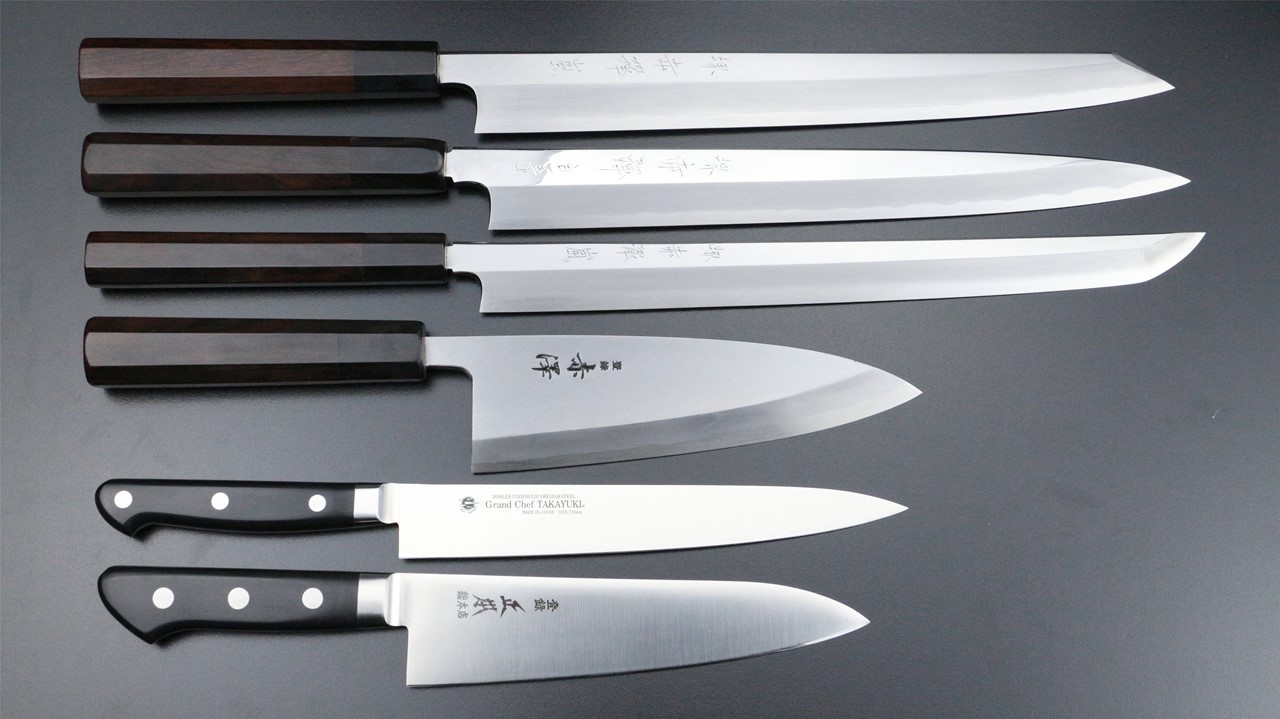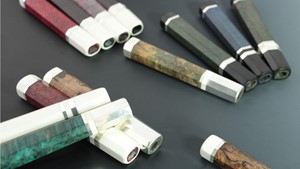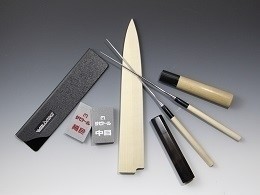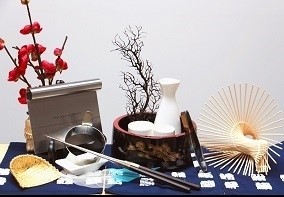Narrator: Japanese chef's knives are world-renowned
0:03
for their unique design and durability.
0:06
And just one can cost you over $900.
0:10
From heating and hammering the metal
0:15
to sharpening the knife's edge
0:17
and polishing the final blade,
0:19
these are only a few of the skills
0:22
a Japanese artisan spends a lifetime learning to master.
0:26
So what makes these knives so coveted?
0:29
And why are they so expensive?
0:55
Narrator: Terukazu has spent 37 years crafting chef's knives
0:59
at his family's factory in Echizen.
1:02
Each one goes through 100 production stages.
1:06
It's a process that requires over 10 years of practice.
1:37
Narrator: Compared to popular European chef's knives,
1:40
Japanese blades are lighter and sharper,
1:43
allowing for more precise cuts.
1:45
On the low end,
1:46
most Takamura blades cost a couple hundred dollars.
1:50
But custom-made pieces can sell for 15 times that.
1:53
One of the most expensive knives produced by the shop
1:56
sold for $6,900.
2:26
Narrator: Takamura Hamono was one of the first knife makers
2:29
to use a certain kind of stainless steel
2:32
called high-speed powdered steel.
2:34
It was originally designed for power tools,
2:36
like saws and drills,
2:38
because of its durability and strength --
2:40
two qualities Japanese chef's knives are known for today.
2:48
Once the metal is cut,
2:50
it's heated in an electric oven
2:52
to harden and strengthen the blade.
2:54
Then the hammering begins.
2:58
At this point, the artisan relies on experience
3:01
and instinct to guide them in producing a blade
3:03
of ideal strength and thinness.
3:07
Hammering leaves behind circular indents,
3:10
something knife makers in the past typically polished away.
3:14
But 60 years ago,
3:15
Terakuzu's father and his colleagues
3:17
discovered the benefit of knives
3:18
with a textured surface, like this.
3:51
Narrator: This hammered finish, called tsuchime,
3:53
allowed chefs to chop ingredients quickly
3:56
and more efficiently.
3:57
It also added a beautiful aesthetic to each blade,
4:01
another element highly valued in Japanese knives.
4:11
Narrator: But a Japanese chef's knife wouldn't be
4:13
nearly as valuable without its supremely sharp edge.
4:18
An artisan presses the blade against a rough grindstone
4:20
made of natural rock,
4:22
a sharpening material you'll only see used in Japan.
4:26
This step distinguishes an artisan's skill
4:29
and ultimately sets a knife's final value.
5:02
Narrator: It takes one full day to sharpen the blade
5:05
and another full day to secure and polish the handle.
5:12
The final knife is totally unique --
5:14
each with its own distinct balance,
5:16
thickness, and design.
5:55
Narrator: Several of the world's best chefs
5:56
use Takamura's knives,
5:58
from René Redzepi at Noma
6:00
to Massimo Bottura at Osteria Francescana.
6:04
Another one of those chefs is Masakazu Fujii.
6:07
He uses Takamura's knives to prepare fish
6:10
at his restaurant in Fukui.
7:06
Narrator: Echizen has been the center
7:08
of high-quality-knife making
7:10
since blacksmiths began crafting chef's knives here
7:12
700 years ago.
7:14
And today, the city is internationally recognized
7:17
for its cutlery production.
7:19
But before knives, artisans made swords --
7:22
another valuable trade in Japanese culture.
7:57
Narrator: Despite dedicating decades to this craft,
8:00
Terukazu and his brothers weren't always set on
8:02
becoming master knife makers.
8:59
Narrator: Professional chef or not,
9:01
getting your hands on one of Takamura's knives
9:03
could take years.
9:05
With that kind of wait time,
9:06
coupled with the decades of training
9:08
required to master this craft,
9:10
it's likely these pieces will remain costly
9:12
for years to come.








留下你的评论